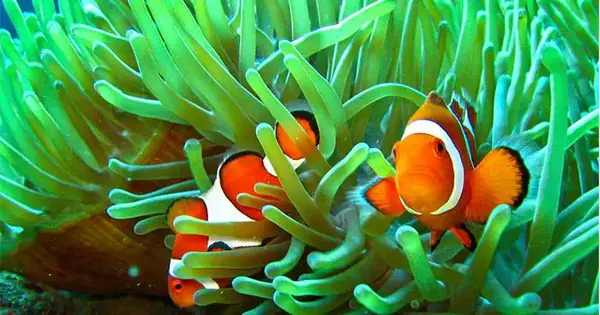Ectosymbiosis is a type of symbiotic behavior in which one organism lives on the body surface of another (the host), including internal surfaces like the digestive tube lining and gland ducts. It is a sort of symbiotic connection in which one organism benefits from living on the surface of another creature, known as the host, while imparting no harm or benefit to the host organism.
The ectosymbiotic species, also known as the ectosymbiont, is typically an immobile (or sessile) organism that feeds on biotic substrate via mutualism, commensalism, or parasitism. Ectosymbiosis occurs in a wide variety of settings and among many distinct species. This type of symbiosis is distinguished by the two organisms’ outward association.
In some animals, the parasite and host create a symbiotic habitat that benefits both. Recent study has discovered that these micro-flora will adapt and diversify fast in reaction to changes in the external environment, in order to stabilize and maintain a healthy ectosymbiotic environment.
In ectosymbiosis, the symbiont (the organism that benefits from the association) often obtains advantages like as protection, access to food, or transportation, while the host organism remains unaffected. Ectosymbiosis occurs when certain species of barnacles attach themselves to the shells of turtles or the skins of whales, getting a permanent substrate for growth and access to food particles in the surrounding water while having no noticeable effect on the host.
Ectosymbiosis contrasts with endosymbiosis, where one organism lives inside the body of another organism. Examples of endosymbiosis include the relationship between mitochondria or chloroplasts and their host cells.
Ectosymbiosis can be advantageous, disadvantageous, or neutral to both organisms involved. Certain kinds of cleaner fish form advantageous ectosymbiotic relationships with larger marine animals such as sharks and manta rays. The cleaner fish feed on parasites and dead skin off larger animals, offering a cleaning service in exchange for food and protection.
Lichens are another type of ectosymbiosis, which occurs when fungi and algae or cyanobacteria form a symbiotic relationship. In this interaction, the fungus provides structure and protection for the photosynthetic partner, and the photosynthetic partner provides nutrients via photosynthesis.
Ectosymbiosis is an important element of ecological systems that helps to maintain ecosystem diversity and stability. It demonstrates the deep interdependence that exists among different organisms in nature.
















